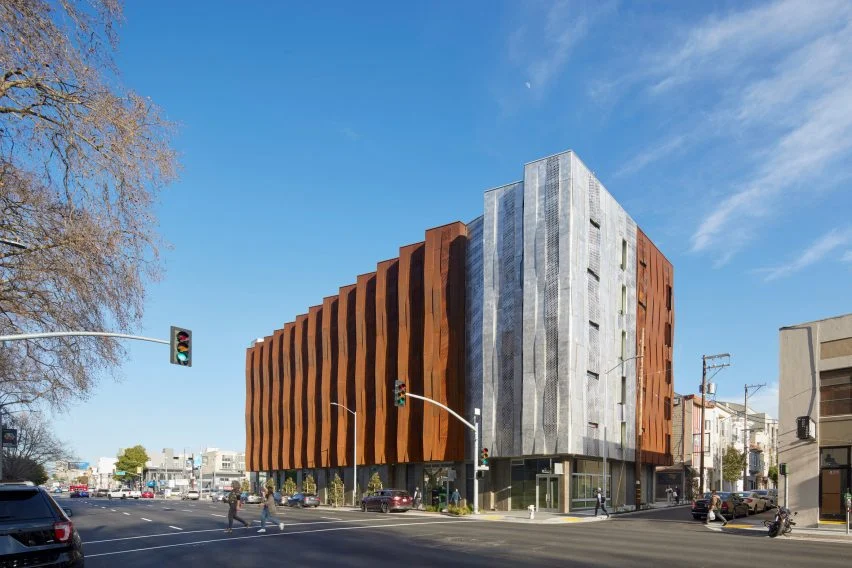145 units of social housing have been completed in San Francisco, California, by David Baker Architects. The company employed modular construction and a weathering steel front.
The 63,000 square foot (5,850 square meter) Tahanan project, which means “coming home” in Tagalog, was finished in November 2021 thanks to a finance prototype designed to shorten the time to completion and lower the price of permanent supportive housing.
The six-story building stacks 87 two-unit boxes made by Factory OS in neighbouring Vallejo on top of a concrete podium. The podium houses a common area that can be used for various purposes. These include on-site social services and tenant retail space.
The 290 square foot (27 square meters) apartments were oriented toward downtown San Francisco rather than the nearby court complex. David Baker Architects gave the modules an angled end that produces a sawtooth facade along the project’s western side.
Also Read: San Francisco Bay Area Rapid Transit District (BART) Extension Project Updates
The small apartments only have enough space for a bedroom, kitchenette, and bathroom. The rest of the occupants’ living quarters are provided by the building’s amenities and support services and by the neighbourhood in which they are located.
Further, weathering steel in copper colour and silver aluminium panels with holes arranged to simulate rice terraces covered the raked facade. Additionally, the ground floor concrete was cast with a handwoven texture using traditional banig mats.
More on the David Baker social housing project
According to Daniel Simons, principal of David Baker Architects (DBA), “This is a very meaningful project for our team. It provides houses to formerly unhoused people, combined with the services they need to survive.”
Furthermore, the location is in the SOMA Pilipinas Cultural District. It was created to maintain the neighbourhood’s cultural variety by showcasing the heritage and accomplishments of the Filipino American community.
According to the firm, “this interaction fosters social engagement and creates visual links between the diverse areas, providing a glimpse into the life of the building from the street.”
In order to make inhabitants feel comfortable and welcome, the design makes use of best practices that the studio and the developer, Mercy Housing.
